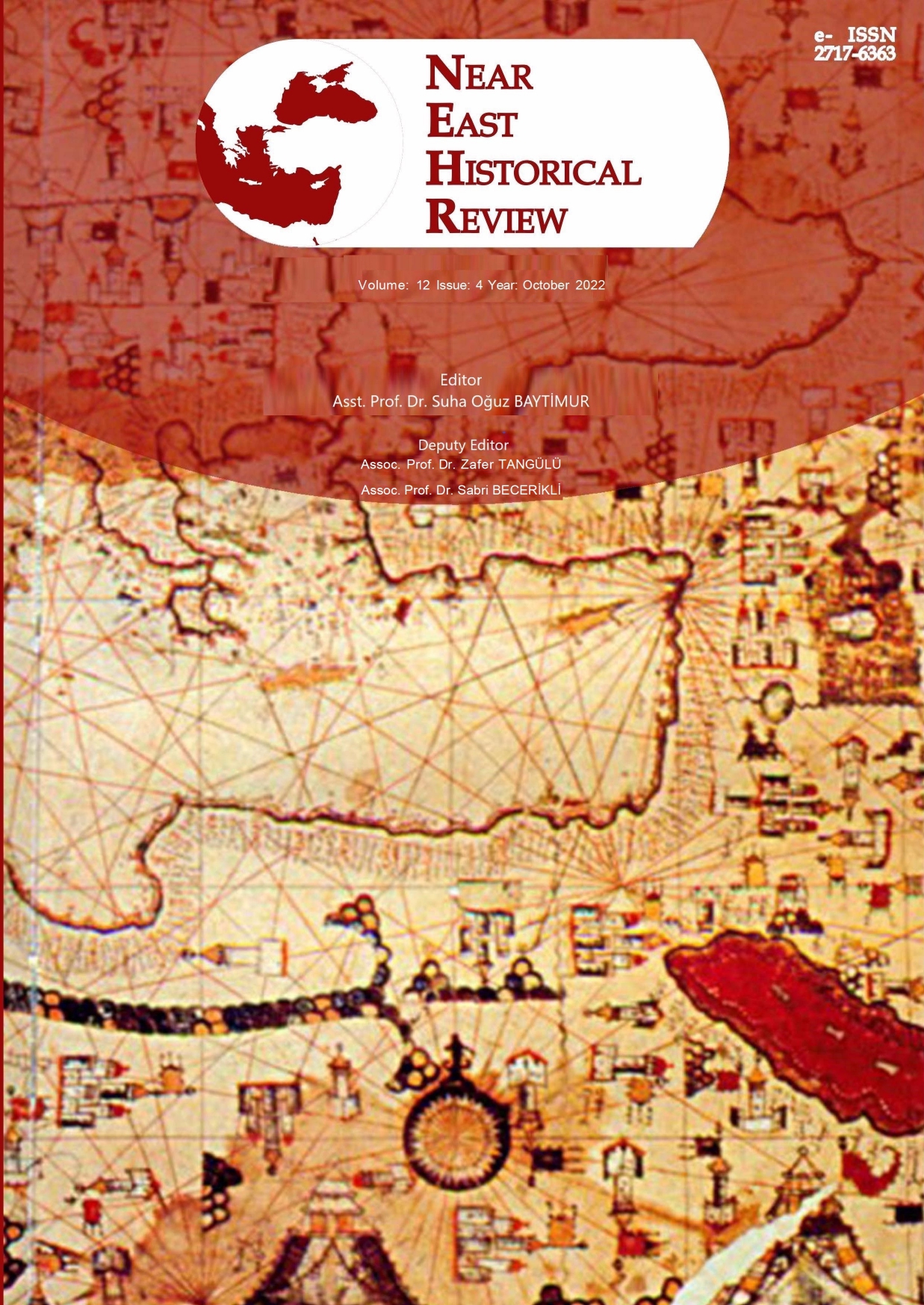Author :
Abstract
Bu araştırmanın amacı, ölçülebilir verilerle Cumhuriyet döneminde Ağrı’da eğitimin tarihsel gelişimini incelemektir. Araştırmada şu sorulara cevap aranmıştır: 1) Ağrı’nın eğitim kademelerinde sayısal gelişim nasıl olmuştur ve günümüzde gelinen durum nedir? 2) Ağrı’nın tüm eğitim basamaklarında okul, öğretmen, öğrenci sayıları ve oranlarının değişimi nasıl olmuştur, gelinen noktada durum nedir? 3) Ağrı’da eğitimin niteliğini ve niceliğini belirleyen faktörler neler olmuştur? Araştırmada nitel araştırma türlerinden biri olan tarihsel analiz tekniği kullanılmıştır. Araştırma eğitim istatistikleri ışığında yapılmıştır. Söz konusu veriler Türk eğitim sisteminin okul basamakları olan okulöncesi, temel eğitim, ortaöğretim, mesleki-teknik öğretim ve yükseköğretim kurumları şeklinde sınıflanmıştır. Araştırmada Cumhuriyetin kurulduğu yıl olan 1923 yılı başlangıç olarak alınmış ve yüzyıllık dönem belirli yılların verileriyle açıklanmıştır. Okullaşma oranlarına bakıldığında okulöncesinin sadece 5 yaş kategorisi dışında kalan tüm eğitim basamaklarında Türkiye ortalamasının altında kaldığı görülmüştür. Ağrı’da okul, öğretmen, öğrenci, öğretmen başına düşen öğrenci sayıları, okullaşma oranları ve öğretmen başına düşen öğrenci sayısı nüfus artışının çok üzerinde gerçekleşmiştir. Aynı şekilde öğretmen başına düşen öğrenci sayısı bakımından olumlu sonuçlar elde edilmiştir.
Keywords
Abstract
The aim of this research is to examine the historical development of education in Ağrı during the Republican period with measurable data. The research sought answers to the following questions: 1) How has the numerical development occurred in the educational levels of Ağrı and what is the current situation today? 2) How has the number and ratio of schools, teachers, students changed in all educational steps of Ağrı, and what is the situation at the current point? 3) What are the factors that determine the quality and quantity of education in Ağrı? Historical analysis technique, which is one of the types of qualitative research, was used in the research. The research was conducted in the light of educational statistics. The data in question were classified as preschool, basic education, secondary education, vocational-technical education and higher education institutions, which are the school steps of the Turkish education system. In the research, the year 1923, the year the Republic was founded, was taken as the beginning and the century period was explained with the data of certain years. When the schooling rates are examined, it is seen that preschool education remains below the average of Turkey in all educational steps except for the 5 age category only. In Ağrı, the number of schools, teachers, students, students per teacher, schooling rates and the number of students per teacher have been realized much higher than the population growth. In the same way, positive results have been achieved in terms of the number of students per teacher.
Keywords
- Ağrı Milli Eğitim Müdürlüğü, 2019-2023 Stratejik Planı, chrome- extension://efaidnbmnnnibpcajpcglclefindmkaj/https://agri.meb.gov.tr/meb_iys_dosyalar/2020_ 02/25092337_AYrY_Yl_Milli_EYitim_2019-2023_Stratejik_PlanY.pdf (Erişim: 1 Şubat 2022).
- Alpaslan, İsmet, Ağrı: Anadolu’nun Giriş Kapısı, Türk Kültürünü Araştırma Enstitüsü, Ankara 1984.
- Alpaslan, İsmet, Her Yönüyle Ağrı, Yıldız Ofset, Ankara 1995.
- Arpaçay, Çağatay, Birinci Umumi Müfettişlik ve Ağrı İsyanı, (Yayınlanmamış Yüksek Lisans Tezi), Atatürk Üniversitesi Sosyal Bilimler Enstitüsü, Erzurum 2010.
- Başvekâlet İstanbul Umum Müdürlüğü, Maarif İstatistiği 1950-1951, Biricik Matbaası, Ankara Tarihsiz.
- Edi, Ahmet, Ağrı’da İdari ve Siyasi Hayat (1945-1960), (Yayınlanmamış Doktora Tezi), Atatürk Üniversitesi, Sosyal Bilimler Enstitüsü, Erzurum 2015.
- Halaçoğlu, Yusuf, “Ağrı”, Türkiye Diyanet Vakfı İslam Ansiklopedisi, https://islamansiklopedisi.org.tr/agri. erişim tarihi: 17 Eylül 2022.
- http://egitimistatistikleri.com. erişim tarihi: 17 Mart 2018.
- https://ilkha.com/egitim/osmanli-dan-gunumuze-agri-da-egitimin-geri-kalmasinin- nedenleri-114489. erişim tarihi: 5 Ağustos 2022.
- https://www.agri.edu.tr/detail.aspx?id=272&bid=1&tid=7. erişim tarihi: 5 Nisan 2021.
- Karabulut, Kerem ve Yalçınkaya, Ömer, “Ağrı İli Göç Analizi”, Ağrı İlinin Sosyo- Ekonomik Profili, AİÇÜ Yayınları, (Editör: Kerem Karabulut), Ağrı 2018, s. 33-42.
- Karabulut, Kerem, “Genel Değerlendirme”, Ağrı İlinin Sosyo-Ekonomik Profili, AİÇÜ Yayınları, (Editör: Kerem Karabulut), Ağrı 2018, s. 417-421. 32 Ağrı İl Milli Eğitim Müdürlüğü, a.g.r. ss. 57-76; https://ilkha.com/egitim/osmanli-dan-gunumuze-agri-daegitimin-geri-kalmasinin-nedenleri-11448.; Ö. Yalçınkaya, a.g.m. s. 397-416.
- Kaya, Faruk vd., “Ağrı İbrahim Çeçen Üniversitesi’nin Ağrı’nın Sosyo-Ekonomik Yapısına Etkileri ve Kentin Üniversite Algısı”, Ağrı İbrahim Çeçen Üniversitesi Sosyal Bilimler Enstitüsü Dergisi, Cilt: 4, Sayı: 2, 2018, ss. 1-23.
- Kaya, Faruk, “Ağrı İli Nüfusunun 1928-2015 Dönemi Okur-Yazarlık Durum Analizi”, The Journal of Academic Social Science Studies, Sayı: 52, 2016, ss. 29-47.
- Kaya, Faruk, “Ağrı İlinin Coğrafi Analizi”, Ağrı İlinin Sosyo-Ekonomik Profili, AİÇÜ Yayınları, (Editör: Kerem Karabulut), Ağrı 2018, s. 1-32.
- Kaya, Faruk, Ağrı İlinin Eğitim Coğrafyası, Ağrı Valiliği İl Kültür ve Turizm Müdürlüğü Yayınları, Ağrı 2016.
- Kılınç, Orhan, Ağrı İsyanları (1926-1930), (Yayınlanmamış Yüksek Lisans Tezi), Marmara Üniversitesi Türkiyat Araştırmaları Enstitüsü, İstanbul 2006.
- MEB, Milli Eğitim İstatistikleri 2018-2019, Türkiye İstatistik Kurumu, Ankara 2019.
- Özdoğan, İsmail, “Ağrı İlinin Cumhuriyet Dönemi Nüfus Seyri (1923-2018)”, Ağrı İbrahim Çeçen Üniversitesi Sosyal Bilimler Enstitüsü Dergisi, 2019, cilt: 5, sayı: 1, ss. 177-206.
- Polat, Çağlayan, 1926-1930 Ağrı İsyanları, (Yayınlanmamış Yüksek Lisans Tezi), Afyon Kocatepe Üniversitesi Sosyal Bilimler Enstitüsü, Afyon 2007.
- Tunç, Bilal ve Özçelik, Fatih, “Cumhuriyet Döneminde Ağrı Nüfusundaki Gelişmeler (1927-1980)”, İnsan ve Toplum Bilimleri Araştırmaları Dergisi, cilt: 6, sayı: 3, 2017, ss. 2132
- Tunç, Bilal ve Yıldırım, Sefa, “Ağrı’da Eğitim (1950-1960)”, Tarih Okulu Dergisi, Cilt: 11, Sayı: XXXIII, 2018, ss. 787-816.
- Tunç, Bilal, “Cumhuriyet’in İlk Dönemlerinde Ağrı’da Eğitim (1923-1945)”, Tarih Okulu Dergisi, Cilt: 11, Sayı: XXXVI, 2018, s. 63-74.
- Uçar, Uğur, Ağrı Halkevi ve Faaliyetleri (1932-1951), (Yayınlanmamış Yüksek Lisans Tezi), Niğde Üniversitesi Sosyal Bilimler Enstitüsü, Niğde 2016.
- Uğurlu, Süleyman ve Genç, Mustafa, “Ağrı İlinin Nüfus ve Demografik Yapısının İncelenmesi”, Ağrı İlinin Sosyo-Ekonomik Profili, AİÇÜ Yayınları, (Editör: Kerem Karabulut), Ağrı 2018, s. 299-312.
- Yalçınkaya, Ömer, “Eğitim ve Ekonomi İlişkileri Bağlamında Ağrı İlinin Eğitim Profili: Niceliksel ve Niteliksel Eğitim Göstergeleri Üzerinden Bir Değerlendirme”, Ağrı İlinin SosyoEkonomik Profili, AİÇÜ Yayınları, (Editör: Kerem Karabulut), Ağrı 2018, s. 397-416.
- Yaylalı, Derya, Cumhuriyet Dönemi Bölücü Faaliyetler İçinde Ağrı Dağı Ayaklanmaları (1926-1930), (Yayınlanmamış Yüksek Lisans Tezi), Selçuk Üniversitesi Sosyal Bilimler Enstitüsü, Konya 2007.
- Yedek, Şahin, “Arşiv Belgelerine Göre Demokrat Parti Döneminde Eğitim Yatırım ve Ödenekleri”, Anemon Muş Alparslan Üniversitesi Sosyal Bilimler Dergisi, Cilt: 9, Sayı: 6, 2021, s. 1891-1909.





